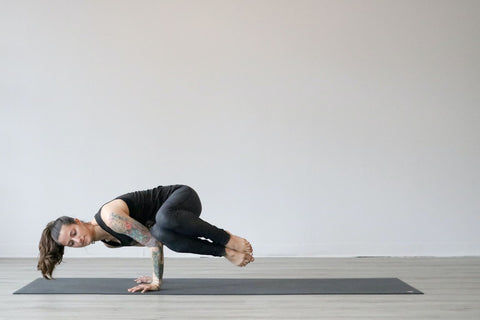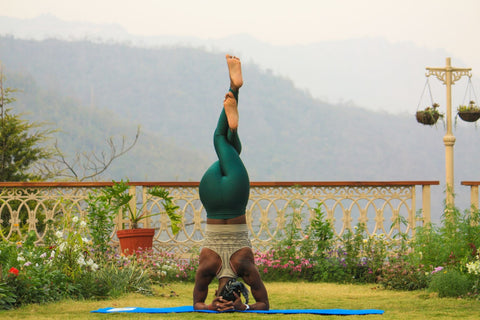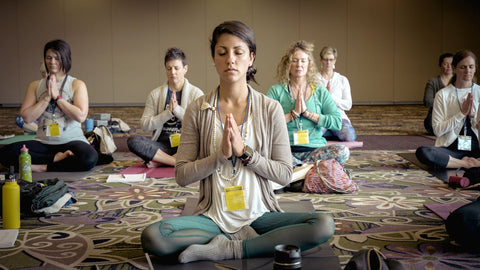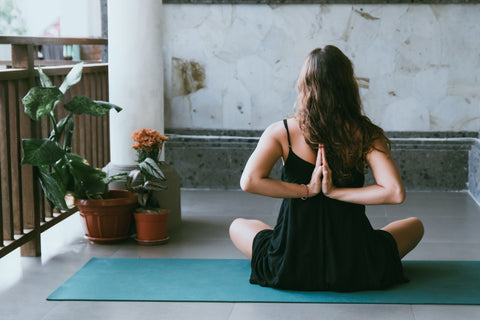
Having poor postures creates a host of unnecessary health issues. Slouching or hunching over when you stand or sit puts undo stress on the muscles and ligaments along the entire posterior chain. This can contribute to lower back pain, aches and pains across the shoulders and neck, and even headaches.
Consistent poor posture also affects the muscles and organs in your abdomen. Years of slouching can contribute to issues with digestion and weaken the muscles of the abdomen, lower back and hips causing the stomach to stick out and giving you the appearance of having a “pot belly”.
Unfortunately, many of the activities that we participate in throughout the day put us in positions where slouching becomes the norm. We spend 7-10 hours a day hunched over a keyboard in the office, and when we aren’t at a desk we are hunched over our Smartphones and tablets.
Those of us who spend all day at a desk and love to scroll through the latest updates on Facebook and Instagram in the evenings aren’t necessarily doomed to a life of pain from poor posture. In fact, the five simple yoga moves below can work to repair the damage of poor posture and strengthen the necessary muscles and ligaments in the hips, abdomen, and back to help you stand tall and prevent pain down the line.

Mountain Pose
This pose is literally what good posture looks like, so practicing it regularly will help re-teach your body proper positioning.
While the mountain pose looks very simple, it will likely be a bit of challenge for those who have been living with poor posture for years. You want to stand with feet shoulder width apart with very slight bend in the knees. Engage the muscles of the core and the legs, keep your chest high, eyes forward and shoulders back, hips should be relaxed and tailbone slightly tucked. Focus on proper breathing and hold the mountain pose for a full sixty seconds. Once you’ve got the pose down, you can make it more challenging by raising your arms above your head.

Standing Forward Bend
From mountain pose you will proceed directly into the standing forward bend. Keep your toes facing forward, feet planted firmly on the mat and fold forward at the waist until your palms are on the floor (or as close as you can get.)
This pose stretches the entire posterior chain and opens the spine. The forward bend also stimulates the organs in the abdomen and could help fire the digestive process. Hold this pose for a full 60 seconds.

Tree Pose
From the standing forward fold, rise up into the tree pose. Standing on one foot, keep your shoulders over your hips and reach the crown of your head toward the ceiling. The balance required to maintain good posture in the tree pose will strengthen the muscles and ligaments that are essential for maintaining good posture in both a standing and seated position.
Work this pose on both sides, hold for a full 60 seconds, focusing on proper breathing, before moving to the next pose.

Downward Facing Dog
The downward facing dog stretches the entire spine while strengthening the muscles of the upper back and shoulders. Practicing this posture regularly prepares you to hold your head and chest tall in perfect posture while performing computer work and other day to day activities.
Downward facing dog is also an excellent pose for improving circulation and undoing the damage caused by elongated periods of sitting throughout the day.

From downward facing dog, transition into the cobra pose. This posture gives a deep stretch to not only the lower and upper back, but also to the shoulders, hamstrings, calves, and ankles. Cobra pose also helps to open up the hips and strengthen the muscles throughout the core - all of which are essential in maintaining proper posture.
Even the most health conscious people are put in positions that can damage their bodies and lead to unnecessary pain. The key to improved function and pain free movement is properly addressing and correcting that damage and eliminating the behaviours that caused it. Adding these five simple yoga moves to your daily routine will help build stronger muscles and ligaments and open up tight joints, allowing you to sit and stand with the best possible posture - eliminating the issues that come from slouching.






